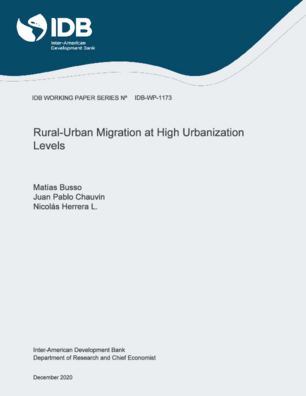Rural-Urban Migration at High Urbanization Levels
Date
Dec 2020
Journal version
Summary
This study assesses the empirical relevance of the Harris-Todaro model at high levels of urbanization a feature that characterizes an increasing number of developing countries, which were largely rural when the model was created 50 years ago. Using data from Brazil, the paper compares observed and model-based predictions of the equilibrium urban employment rate of 449 cities and the rural regions that are the historic sources of their migrant populations. Little support is found in the data for the most basic version of the model. However, extensions that incorporate labor informality and housing markets have much better empirical traction. Harris-Todaro equilibrium relationships are relatively stronger among workers with primary but no high school education, and those relationships are more frequently found under certain conditions: when cities are relatively larger; and when associated rural areas are closer to the magnet city and populated to a greater degree by young adults, who are most likely to migrate.
Generative AI enabled





